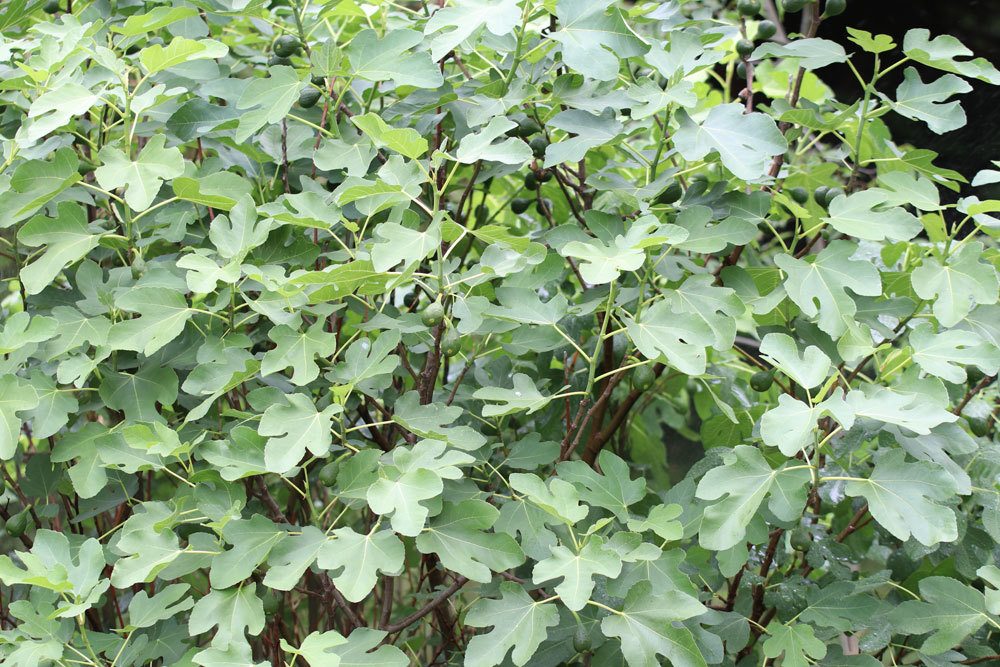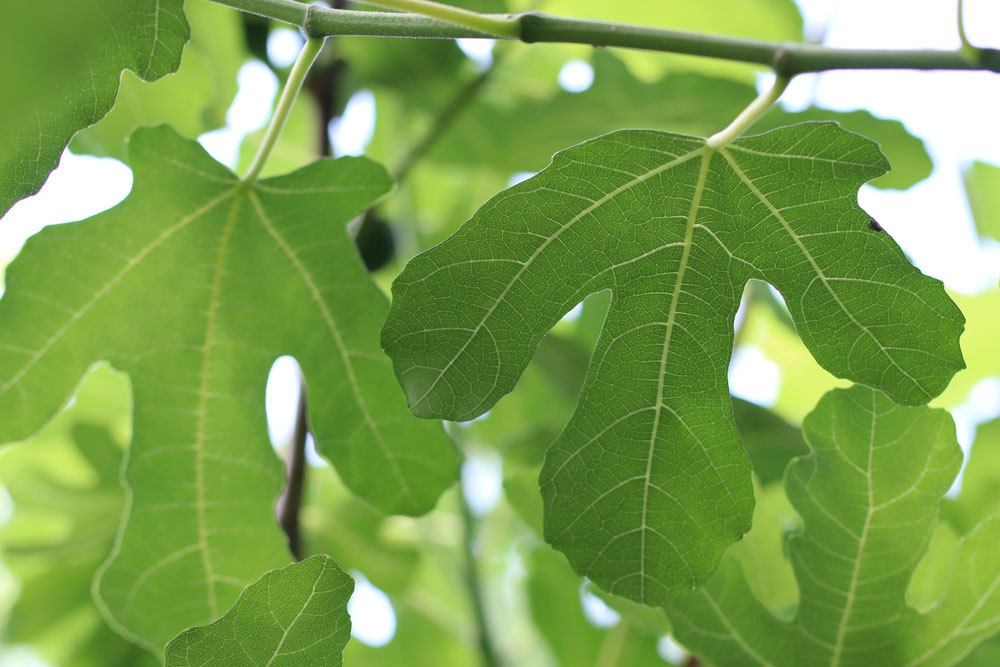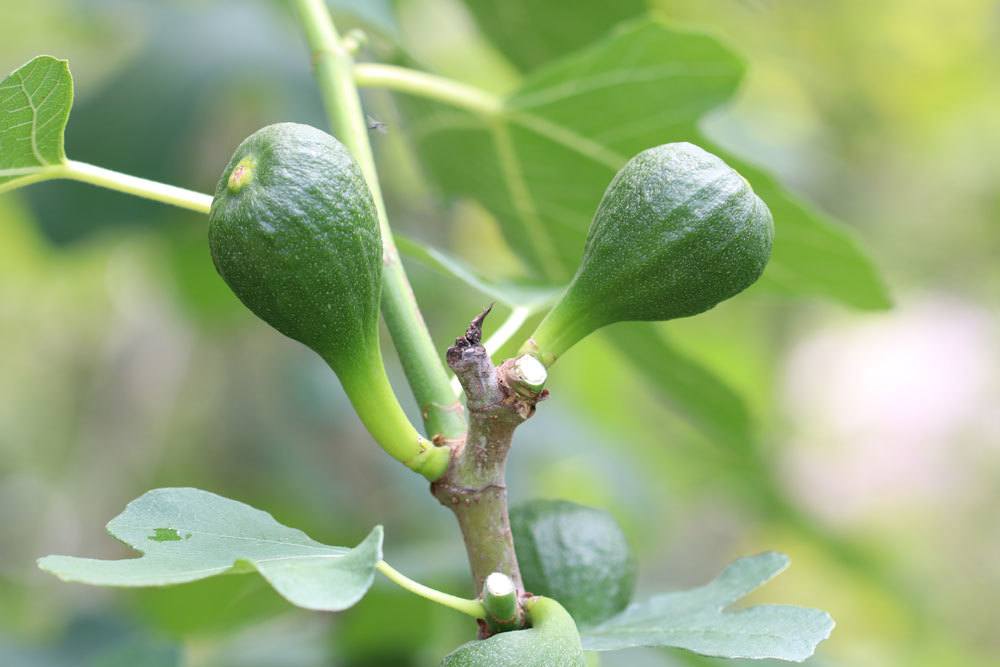More and more amateur gardeners decide to cultivate an attractive fig tree in the garden bed or in a pot, as it offers a Mediterranean flair. Actually, the fig is very easy to care for and frugal, but those who want a bountiful harvest of the tasty fruit should follow a few tips when fertilizing. Because if the tree gets too little or the wrong fertilizer, the fruits will not grow out properly and will wither even before harvest. If too much fertilizer, then this will affect the growth.
Contents
Correct timing
The fig does not always need fertilizing. To do this, there are different timing throughout the year, when it sometimes needs more, sometimes less, and sometimes no fertilizer at all. Thus, the schedule for fertilizing the fig tree is as follows.
- in early spring, before budding, the basic fertilization is carried out
- after six weeks regular fertilizing is started
- regularly fertilize once a week
- between April and September
- then slowly stop fertilizing
- do not add fertilizer every week
- this way the growth can be completed
- do not fertilize from October to February/March
- here the tree is in hibernation
- outdoor figs often do not need the weekly fertilizer application
- garden soil is usually more nutritious
Young figs, on the other hand, which are still regularly moved indoors in the planter, are also fertilized over the winter, if they do not spend the winter in a dark place, such as a garage or basement.

Types of fertilizers
Different types of fertilizers
The fig tree needs mainly potassium and phosphorus, so when fertilizing it should be ensured that the fertilizer used contains mainly these nutrients. In addition, the type of fertilizer chosen should contain nitrogen, zinc, magnesium and copper. Also, the fig tree is quite tolerant of lime, but this does not necessarily have to be present in the fertilizer.
Above all, the environment in which the fig was cultivated, outdoors or in a pot, is also important for the decision of the fertilizer. This is because with potted plants, it becomes more difficult to regularly incorporate natural fertilizer, such as compost or horse manure.
The following fertilizers have proven most effective for figs:
- Compost mixed with horn meal or horn shavings.
- horse manure
- organic vegetable fertilizers
- mineral complete fertilizer
- liquid fertilizer
- blue grain as a long-term fertilizer for basic fertilization
The different types of fertilizers mentioned can also be used mixed throughout the year. Thus, a different type of fertilizer can be used for basic fertilization than for regular fertilization over the summer.
Basic fertilization
In early spring/late winter in the month of March before the new shoots, the basic fertilization should be done. Potted plants also need this basic fertilization, which should usually also be done when repotting. For this purpose, slow-release fertilizer, for example in the form of mineral slow-release fertilizer, or compost or horse manure mixed with horn meal is usually used. Horn shavings are also a good choice here. For the next six weeks, then the fig tree should not be fertilized.

Thus, the basic fertilization can be done as follows:
- Prepare soil when planting or repotting.
- mix in compost, horse manure, horn shavings and horn meal
- if the tree is older, work carefully in the open ground
- alternatively, blue corn can be used in this case
- for figs in pots also use blue corn or other slow-release fertilizer
This basic fertilization has to be done only once a year. After that, other types of fertilizers can be used for regular fertilization.
Regular fertilization
About six weeks after the basic fertilization, the regular fertilization begins. This is usually done once a week. Here, too, it makes sense to proceed according to the type of cultivation. A particularly suitable fertilizer for weekly applications is a complete fertilizer in liquid form.
This contains all the nutrients that the fig needs for vigorous growth, flowering and especially for the formation of tasty fruits. This is because even if many fruits have formed, they can wither away if they do not receive enough nutrients over their growing season. To find the right amount of fertilizer, always pay close attention to the manufacturer’s instructions.
Fertilization in the tub
Fertilization when cultivating in a plant container
Especially potted plants usually need more fertilizer additions. This is partly because the nutrients are washed out more quickly during the watering process, and partly because natural nutrients do not get into the pot and the soil, as is often the case outdoors. Therefore, especially in the case of Ficus carica cultivated in a container, care must be taken to give fertilizer regularly.
This should be done as follows:
- even in the pot, the basic fertilization must be done in late winter.
- to do this, remove the fig from the pot and fill in new, prepared soil
- adding blue grain to the existing soil is also an option
- then wait six weeks
- From now on, fertilize regularly every week
- use liquid complete fertilizer for this
- this can be given regularly with the irrigation water
- so the fig tree gets all the necessary nutrients
- slowly stop fertilizing in autumn
A fig tree, which will be wintered in a tub in the warm house, can continue to receive fertilizer, but only moderate. Fig trees that find winter quarters indoors, but in a dark and somewhat cooler place, are usually not fertilized during this period.
Fertilization when cultivated outdoors
If the fig tree is not in the corner of a house in a small bed, which would be more comparable to a tub, but directly in the open ground in the middle of the garden or on a large meadow, then it does not need so much fertilizer. This is because, especially in the open ground, the trees find many natural nutrients, for example, from falling leaves that have been left lying around and decomposed. Nevertheless, additional fertilization should also be applied here.
This can be done as follows:
Basic fertilization in spring
- to do this, lightly dig up the soil around the roots
- carefully mix in compost, horn meal and horn shavings
- also slow-release fertilizer can be spread on the soil around the tree
- this will be washed into the soil with the rain in spring
- this stimulates the growth of the fig and the formation of flowers
- regular fertilization also begins after about six weeks.
However, this does not necessarily have to be done every week.
Thus, the fig tree and its growth should be observed. If it develops well, forms many flowers and the fruits become nice and plump, then additional fertilizer is hardly necessary over the summer due to the nutrients in the garden soil. Only if the fig is lagging behind in development should full fertilizer be given regularly.
For outdoor figs, this also means stopping fertilizing altogether in the fall. This is because they overwinter outside, shed their foliage and do not require any fertilizer during the cold months. Above all, care must be taken to avoid possible overfertilization of Ficus carica cultivated outdoors.
Fertilizing mistakes
Of course, mistakes can also happen when fertilizing the fig tree. If the tree bears many flowers and later fruits, but they do not form properly and dry up on the tree, then usually too little fertilizer was applied. If, on the other hand, the fig forms shoots that are much too long and thin, then it has been fed too much nitrogen. Also then the harvest turns out relatively small or not at all.
Therefore, it is important to pay close attention to the manufacturer’s instructions when using commercial fertilizers. Although the plant needs nitrogen, this should not be the main content of the chosen fertilizer. If the wrong fertilizer was used in one year, then these errors cannot be corrected for the current year. However, the next year can again expect a bountiful harvest, if the fertilizer applications are changed accordingly.


